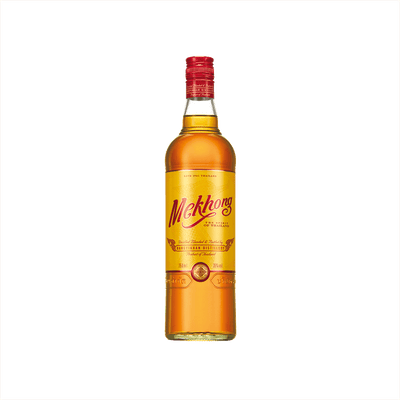Thai Spirit
What is Thai Spirit?
Thai Spirit represents a fascinating category of Other Rum that breaks free from traditional Caribbean and Latin American rum conventions. These spirits are distilled from sugarcane in Thailand, often incorporating unique local ingredients like rice or tropical fruits that give them distinctly Southeast Asian flavor profiles. What truly defines Thai Spirit is its marriage of rum-making techniques with Thai culinary traditions, producing spirits that might feature lemongrass, ginger, or other aromatic spices that make them taste like liquid versions of Thai cuisine itself.
Learn More About Thai Spirit
What makes Thai Spirit unique?
Thai Spirit stands apart from other rums through its use of sugarcane juice instead of molasses, creating a cleaner, more vegetal profile that's closer to rhum agricole than traditional Caribbean rums. The tropical climate accelerates aging in a unique way, producing spirits with intense concentration and complex flavors in relatively short periods. Most distinctively, Thai distillers often incorporate local botanicals and spices during production, infusing their spirits with lemongrass, galangal, and other indigenous ingredients that create flavor profiles you simply won't find anywhere else in the rum world.
How is Thai Spirit made?
Thai Spirit starts with locally grown sugarcane that gets fermented and then distilled in traditional copper pot stills, often in small batches by family-run distilleries scattered across Thailand's countryside. The spirit typically goes through multiple distillations to achieve its clean, neutral character, with some producers adding subtle botanical infusions during the final distillation process. Many distillers age their Thai Spirit briefly in large clay jars or wooden vats, which gives it a gentle smoothness while maintaining the bright, grassy notes from the sugarcane base.
How do you drink Thai Spirit?
Thai spirits like Lao Khao and SangSom are traditionally enjoyed neat at room temperature, sipped slowly during meals or social gatherings where the focus is on conversation and connection. While some bartenders incorporate these spirits into creative cocktails that highlight their unique rice-based or sugarcane flavors, they're most commonly consumed straight or mixed simply with soda water and lime. These spirits shine brightest during warm weather and festive occasions, particularly when paired with spicy Thai cuisine where their clean, slightly sweet profiles help cool the palate between bites.
How do I choose a good Thai Spirit?
When selecting a Thai spirit, start by considering whether you want the bold, funky character of traditional lao khao (Thai rice whiskey) or the smoother profile of modern Thai whiskeys like those from Chalong Bay or Iron Balls. Your cocktail choice should guide your decision - if you're mixing something citrus-forward like a Thai-inspired sour, opt for a cleaner rice spirit that won't compete with the lime, but if you're crafting a stirred drink or sipping neat, choose something with more complexity and traditional fermentation flavors. Always check the ABV and production method on the label, as artisanal distillers often provide tasting notes that help you match the spirit's personality to your intended drink.
Nutritional Information
Typical Calorie Range per Ounce: 65-70 calories
Typical Carbohydrate Range per Ounce: 0-2 grams
Typical Sugar Range per Ounce: 0-1 gram
Typically Gluten Free: Yes
Thai spirits like Lao Khao and Thai whiskey are generally distilled from rice, which naturally contains no gluten. The distillation process also removes gluten proteins from grain-based spirits. Most traditional Thai spirits should be safe for those avoiding gluten, but we always recommend checking the detailed product information and consulting with manufacturers to confirm gluten-free status, especially for flavored varieties or newer brands that might include additional ingredients.
Scrolled this far? Your reward? Thai Spirit Trivia!
- Thai rice whiskey gets its signature funk from a wild yeast starter called luk pang that's been passed down through families for generations. This ancient fermentation culture creates flavors so distinct that master distillers can identify which village produced a bottle just by smell. The starter contains over 200 different microorganisms, making each family's recipe as unique as a fingerprint.
- The most expensive Thai spirit isn't aged in barrels—it's buried underground in clay pots for decades. This traditional technique, called lao khao din, allows the spirit to absorb minerals from the earth while maintaining a constant temperature. Some bottles unearthed after 50 years sell for thousands of dollars and taste completely different from their surface-aged counterparts.
- Thailand's national spirit, Mekhong, contains zero mekong river water despite its name. The recipe includes 95% rice spirit mixed with sugarcane molasses and a secret blend of indigenous herbs that the company has never fully disclosed. Only three people know the complete formula, and they're contractually forbidden from traveling together.
- Thai distillers traditionally test alcohol strength by setting it on fire and timing how long the flames burn. Different flame colors and burn durations indicate specific alcohol percentages. This method is so accurate that some rural distillers can determine proof within 2% just by watching the fire dance across the liquid's surface.
- The golden bottles of premium Thai whiskey aren't just decorative—they contain actual gold leaf that's meant to be consumed. The edible gold supposedly brings good luck and prosperity, but more importantly, it creates a subtle metallic taste that enhances the spirit's natural sweetness. Each bottle contains roughly $50 worth of 24-karat gold.
Higher-proof spirits can be intense. Mix carefully, taste thoughtfully, and enjoy responsibly.
Gift message (optional)

